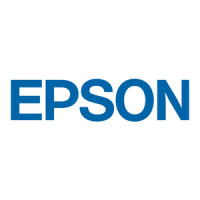Projector Connections
27
b
Connect the USB cable or USB flash drive to the projector's USB-A port
as shown.
Attention
• Use the USB cable supplied with or specified for use with the device.
• Do not connect a USB hub or a USB cable longer than 3 meters, or the
device may not operate correctly.
c
Connect the other end to your device, if necessary.
gg Related Links
• "List of Functions" p.11
Disconnecting a USB Device
When you have finished presenting with a connected USB device, disconnect
the device from the projector.
a
Turn off and unplug the device, if necessary.
b
Disconnect the USB device from the projector.
Connecting to a Document Camera
You can connect a document camera to your projector to project images
viewed by the camera.
The connection method varies depending on your Epson document camera
model. See the document camera manual for details.
gg Related Links
• "List of Functions" p.11
Connecting to External Devices
Follow the instructions in these sections to connect external devices to the
projector.
gg Related Links
• "Connecting to External Speakers" p.27
Connecting to External Speakers
To enhance the sound from your presentation, you can connect the projector
to external self-powered speakers. You can control the volume using the
projector's remote control.
a
• If you want to output audio from the external speakers when the
projector is turned off, select Always On as the A/V Output setting
in the projector's Extended menu.
s Extended > A/V Settings > A/V Output
• You can also connect the projector to an amplifier with speakers.
• The projector's built-in speaker system is disabled when you connect
external speakers.
a
Make sure your computer or video source is connected to the projector
with both audio and video cables as necessary.

